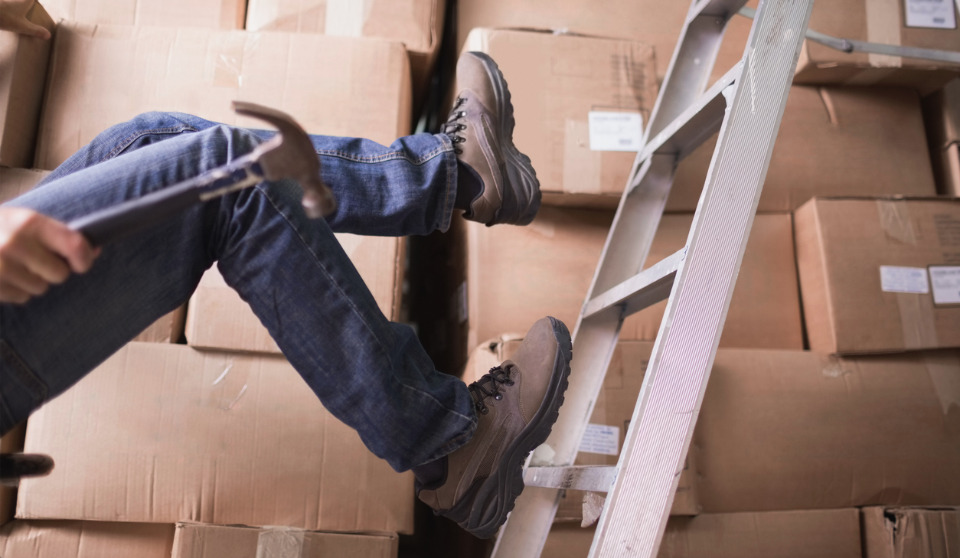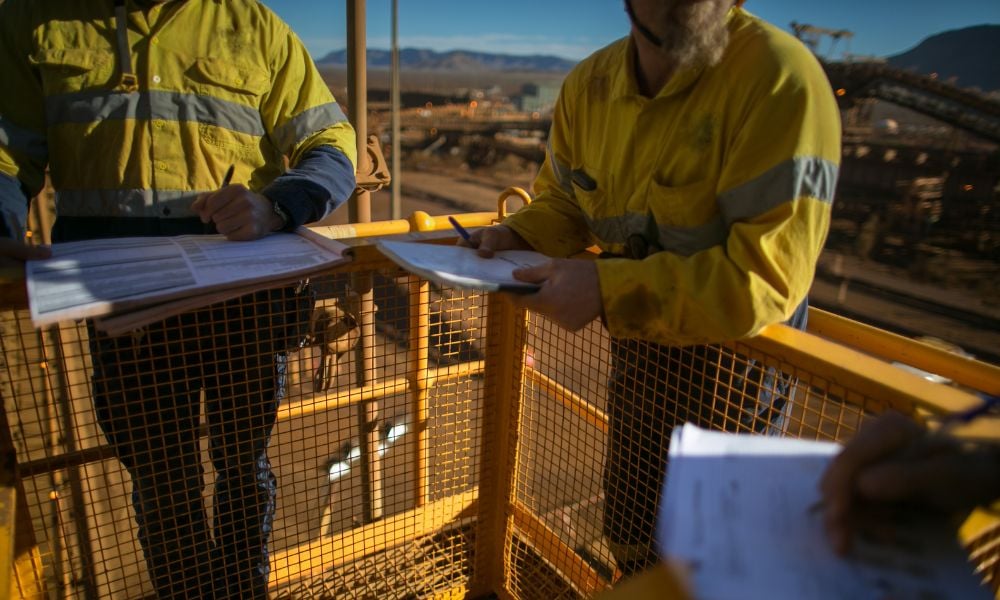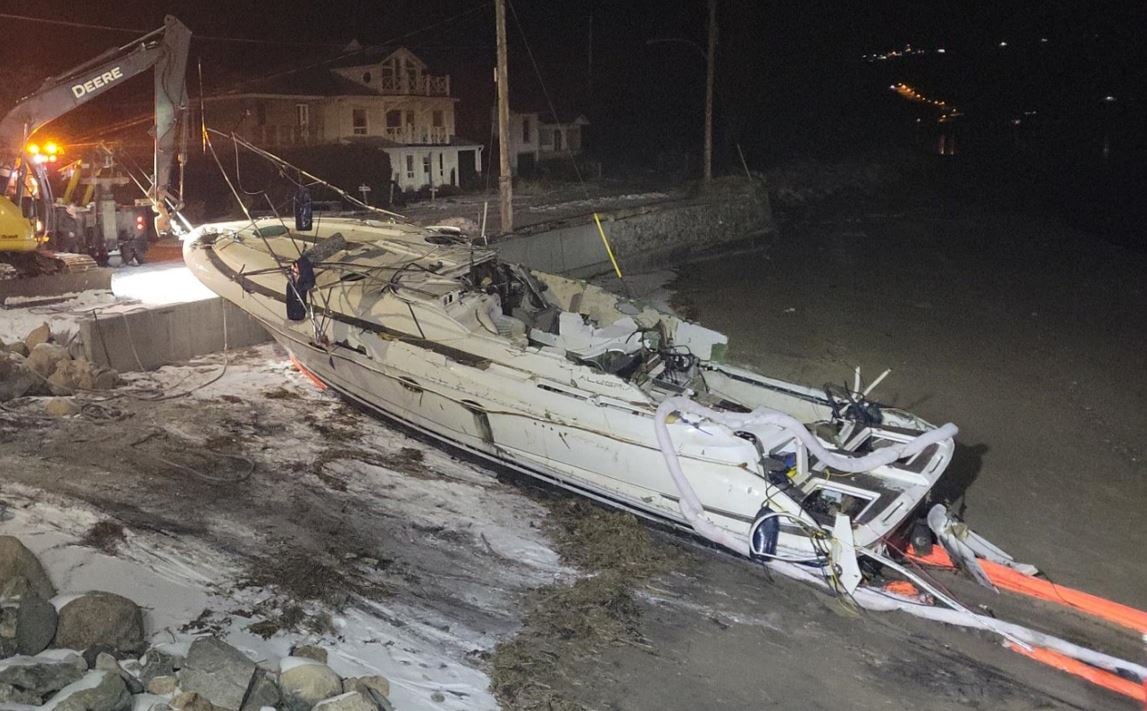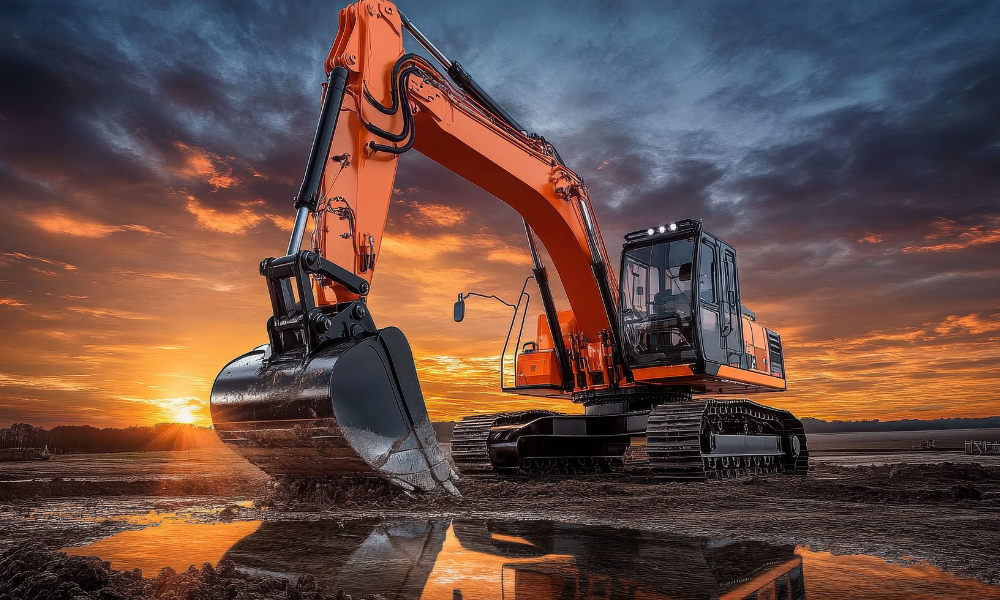For those working at heights, finding the right equipment is essential

The Canadian Centre for Occupational Health and Safety (CCOHS) defines working at heights as “any work where a person could fall a distance and be injured. This event might include, for example, falling from a step ladder, off of a roof, or through an unguarded hole in the ground or floor. Fall protection may also be required when working above an open top tank, bin, hopper, or vat.”
Although the exact number may vary depending on each province, OHS laws generally require some kind of action when a worker has the potential to fall about three metres (10 feet), says the CCOHS.
Legislation is typically updated every few years — every three to five years on average, says Erica Cole, product manager at Pure Safety Group. These legal updates are mandatory, but there are voluntary standards as well. One of the major fall protection standards in Canada is CSA Z259.17-16. There are subcategories and subcomponents of that standard that address each component in a fall arrest system: connecting devices, anchors and body wear such as harnesses.
In the U.S., there are different trigger heights depending on the activity, says Dan Henn, vice president of operations at Reliance Fall Protection. “In general industry, we generally expect anybody who is subject to a fall of four feet or greater to be protected in some manner,” he says. “In most construction environments, that trigger height is about six feet.”
Trigger heights are “predicated on the amount of risk that we are collectively willing to accept in a particular discipline or industry,” adds Henn.
Fall protection in numbers
According to the CCOHS, 42,000 workers get injured annually due to fall accidents in Canada. Sixty-seven per cent of falls happen on the same level (slips and trips), while the remaining 30 per cent are falls from heights. Fall incidents represented 18 per cent of “time-loss injuries” in 2016 as per the Association of Workers’ Compensation Boards of Canada.
In 2017, there were 887 fall fatalities in the United States and 227,760 injuries. Of that number, more than half were on the same level. Indeed, one doesn’t need to fall a tremendous distance for there to be a potential for a serious impact. In 2017, according to the U.S. Bureau of Labor Statistics, 12 per cent of fatal falls were from elevations of less than six feet.
There are several requirements for those working at heights and a broad spectrum of equipment that is understood as fall protection.
Nevertheless, lack of or inadequate fall protection remains a huge issue in North America. In 2013, the U.S. Occupational Health and Safety Administration (OHSA) stated that fall protection was the most cited workplace safety violation in the United States, tallying in at 8,241 violations, ahead of hazard communication (6,156) and scaffolding (5,423).
A number of companies in Canada have received fall protection fines in the last year or so relating to lack of or inadequate fall protection: In March 2019, M K Construction was fined $20,000 after exposing a worker to a fall risk of up to 6.1 metres; in April 2019, Cybertech Controls and Electric was fined $70,000 after a worker fell through a ceiling; in August 2019, roofing company Navco Construction was fined $13,179 after workers were exposed to fall risk; in November 2019, landscape firm PattyMac was fined $56,250 after a worker was injured falling from a ladder; and, in January 2020, Thunder Creek Pork was fined $60,000 after a worker was injured after falling from a trailer and landing on a cement floor.
So, who needs fall protection? And when?
“Fall protection is equipment designed to prevent you from falling or protect you if you actually fall. The benefit is if you fall you will not sustain severe injury,” says Cole.
“Anytime where we have the ability to fall to a lower level is typically when we're going to be looking at implementing some type of fall protection system,” says Henn.
“A lot of people, when they think about fall protection, they immediately go to the construction industry,” says Cole, “but there are other industries as well — and not only industry, but just regular, everyday people that are working.”
“Fall hazards exist in virtually every imaginable workplace and, quite frankly, in most residences, if we consider the act of cleaning out one's gutters or hanging up the Christmas lights,” says Henn.
He adds that a fall hazard exists “anytime we have somebody who is working on some elevated surface structure or in an environment where they are subjected to a fall hazard, which is usually going to be some form of unprotected side or edge, a catwalk, a roof, on top of a piece of equipment and machinery that perhaps we're maintaining or repairing.”
What equipment should be used?
Cole says there are a couple of major components that one should have in a fall protection system.
Before anything, use the correct hard hat. Working at heights, it is very important to have the right head protection. Rather than a conventional hard hat that simply rests upon the head, workers at heights should use a hat that is both top and side impact rated and has a chin strap or retention system.
Once the hat is on, “the first thing we're going to be investing in is engineering resources to determine where we can prevent or eliminate exposure to fall hazards. Can we do the work on the ground? Can we bring the work to the worker as opposed to taking the worker to the work?” says Henn.
i. Passive systems
There are a host of passive systems that can be implemented, including guardian barriers, netting or any kind of physical barrier that will prevent access to the fall hazard.
Passive fall protection “is designed to inhibit you from ever reaching the edge, so you never encounter the dangerous component of your work area,” says Cole. This could be a guardrail, a warning line system or even a person that watches over other workers and warns them when they get too close to the edge. In addition, there are positioning devices, which could be lanyards or chain positioning lanyards that allow you to work within a certain distance; they position your body so that you can never reach the edge.
Then, we get into “active” fall protection systems. “That’s our last line of defence,” says Henn.
ii. Harness
“When we get into those types of systems or solutions, the basic products or components of systems are first of all going to be a full body harness, which is basically the envelope for the individual at risk, the thing that we're going to use to capture and contain their body and hopefully arrest or prevent access to the fall hazard if we're rigged,” says Henn.
A body harness, which you wear on your person — your torso — is designed to minimize the forces that your body would experience in the event of a fall, says Cole.
“The type of harness that you would use would be based off of your application,” says Cole. For example, she says, the harness that someone may wear for construction may contain a tool belt. This harness is not necessarily aimed at other industries. If a person is working on an offshore rig or doing wind or energy work, there will be different components or different materials of hardware used.
iii. Connecting device
The next element is a connecting device or connecting subsystem. This could be in the form of a lanyard or lifeline. This is the tether that will attach to the user’s full-body harness.
A lanyard is a piece of webbing that may have a shock absorber on it, and it will connect your anchorage to your body harness. In essence, it’s a piece of equipment that goes between two other pieces of fall protection equipment.
This device connects to an integral part of active fall protection: the anchorage point.
iv. Anchorage
The anchorage is a structural element, says Henn. It could be the structure being worked on or some adjacent structure or element that is going to be strong enough to restrict movement or arrest the fall.
The other essential attribute to look out for in an anchorage structure is the elevation of the structure above the working surface. The higher the elevation of the anchorage, the shorter the potential there is for freefall distance or an unrestricted fall distance, says Henn.
Cole says an anchorage could be a component bolted to the floor, ceiling or a structural beam.
An anchorage point needs to be strong, proximate to the working location and elevated at least a couple of feet above the user’s dorsal ring on their full-body harness. Henn says the ideal minimum anchorage height is somewhere in the vicinity of seven and a half feet, although there are different strength requirements based upon the type of work that is being performed.
“The elevation of the anchorage above the walking working surface is critical to the outcome of any fall arrest scenario. It improves every measurable metric. The sooner I can rescue or fall, the less risk there is that that person is going to be injured or killed,” he says.
Cole says the user rating should be taken into account as well as how heavy the person is that is wearing the equipment. The substrate material to which the anchor connects comes into play. It could be wood, metal decking or even concrete. Typically, these should be listed in the manufacturer instructions for that anchor. She says that you would also have a qualified person or an engineer examine the system on top of the manufacturer’s instructions, which are based on testing the company does and current legislation.
There is also a wide variety of products or solutions referred to as “anchorage connectors,” These will function as the connector between the anchorage and the personal fall protection or fall arrest system.
This equipment is all considered as active fall protection. Cole says to remember it as “ABC”: anchorage, body harness and connective device.
v. Dropped object prevention
While ABC is very important, Cole says there is another component that is not receiving as much light as it should — although it is starting to pick up steam. “I call that component the ‘D component,’ which is dropped object prevention,” she says. Indeed, if someone is doing maintenance or repairs or doing construction on a new build, the worker may have tools. “You have to think about what’s beneath you, what happens if that worker drops a wrench or a hammer. If you drop that at six foot or above height, serious injury or even a fatality could occur.”
Cole says that drop object prevention could be a tool tethering system, which would adhere to the worker’s body so that, if their hand lets go, the tool will not fall.
What are the dangers of not using, or using ill-fitting fall protection?
In fall-related accidents, most injuries due to ill-fitting or improper protection are to the appendages (legs, arms) as well as the back, says Cole. She says that, on top of injury and potential death, companies also face government fines. This is a huge financial impact for the company.
“The risk of working without some kind of fall protection is, I think, relatively plain to see,” says Henn. “If we fall at considerable distance, we're going to sustain at the very minimum some kind of an injury, whether it be broken bones, soft tissue damage, organ damage, concussion, you name it. There's just a tremendous amount of risk. You know, gravity is always going to win.”
“I actually find that most accidents or falls that happen are due to improper selection of equipment,” says Cole.
Injuries and fatalities will happen not just due to a lack of fall protection but if one is using a system that is not designed to deal with the specific risk factors of the activity taking place in that specific environment, says Henn.
Another danger is that of orthostatic intolerance or suspension trauma. Essentially, explains Henn, this is when somebody is hanging in a harness and the lower elements of the harness — particularly the leg straps — restrict blood flow through the legs. This means that a large volume of blood is not being circulated as a result of not being oxygenated. Furthermore, if a soft tissue impact took place during the course of the fall, there could be clotting. As such, when the worker is taken down after a period of time, all the blood will suddenly be released, potentially accompanied by blood clots, and many different things can happen on a cardiovascular level or pulmonary level that are extremely negative.
Fall protection is not complete without a rescue plan. The aforementioned orthostatic intolerance occurs when there is no rescue plan in place. “We also need to make sure that we have taken the time to visualize our outcomes,” says Henn. “If we examine the working area and the work that has to be done and the hazards associated with working that area and what is going to happen to the worker should they fall with the equipment that they have, do we have confidence that it's going to do what we expect it to do?”
“Everyone should have a rescue plan,” says Cole. This would be part of active protection.
Can fall protection be improved?
In short, yes. In the U.S., there are some minimum expectations of products and components for manufacturers, but, fundamentally, “it's up to the user and the employer to make those determinations to ensure that they've bought a product that is compliant with the basic expectations of the regulation,” says Henn.
Furthermore, all of requirements are minimum requirements, which can be different from what should be best practice. Fall protection products “are not terribly intuitive,” Henn says. “A lot of the outcomes or performance elements of fall protection aren't going to be exceptionally obvious to somebody who isn't educated in terms of how these systems work and what their limitations are.”
Sadly, says Henn, these best practices are still lacking on many job sites. “I've been doing this for about 17 years now. And I've never been on a job site or in any significant facility where people were using fall protection, where I did not see at least one individual who was at risk of being seriously injured or killed because they were not utilizing their equipment correctly.”
“Make sure you’re working safely and make sure your equipment is up to date and up to standard,” says Cole. “It’s really just about making sure that people are getting back home the same way that they came in.”





